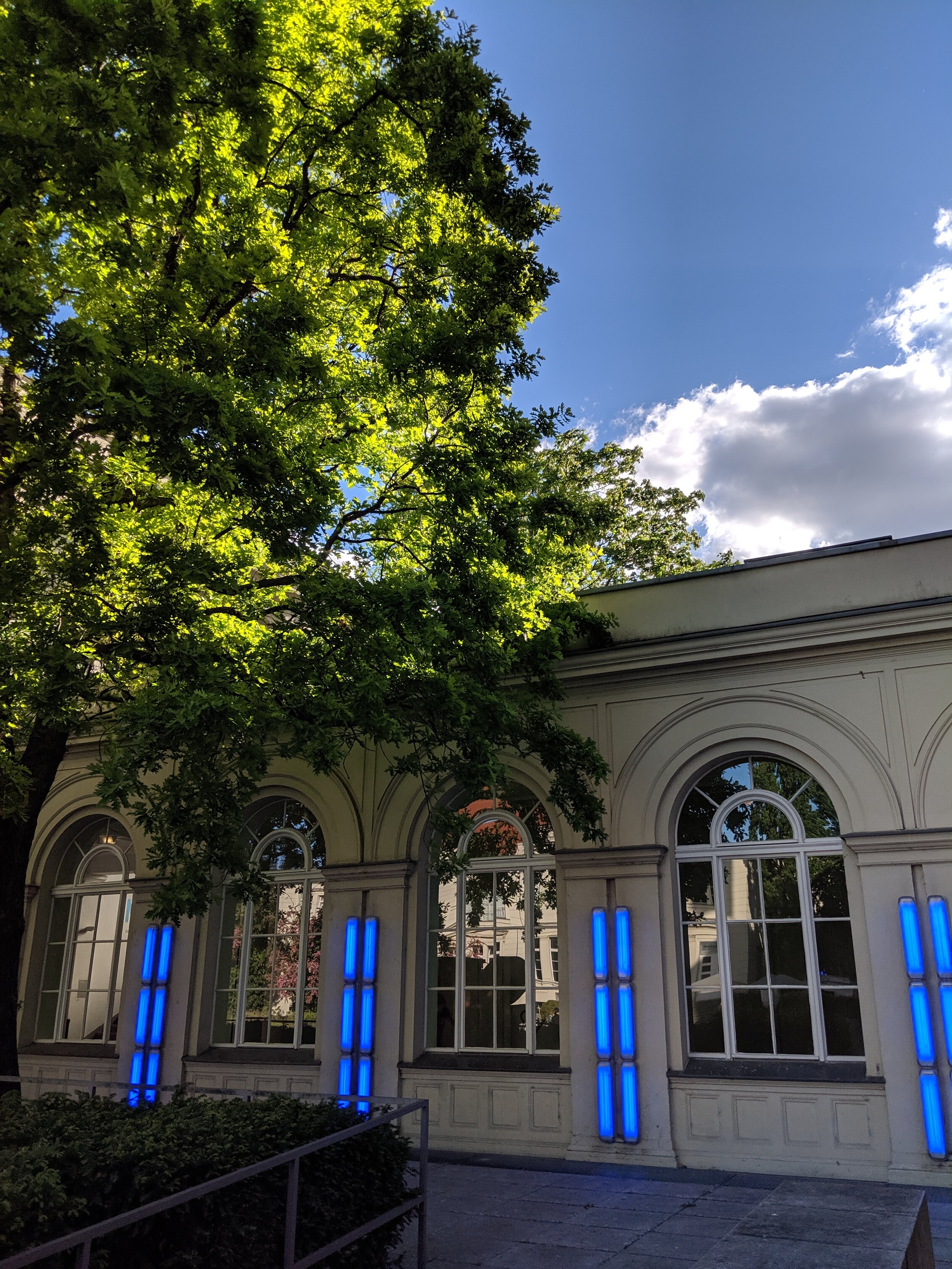Anicka Yi’s Mechanic Ecosystem: Resilience, Technology, Identity and Posthumanism.

An analysis of “In Love With The World” (2021) by Anicka Yi
In November, 2021, during a brief visit to London, I found myself at Tate Modern. Stepping into the Turbine Hall, I was greeted by Anicka Yi’s “In Love With The World” (2021), a mesmerizing display of tentacled, jellyfish-esque robots gracefully hovering, effectively transforming the space into an ethereal aquarium.
Yi’s creation is more than an artistic spectacle—it embodies a mission to deconstruct the barriers that typically delineate plants, animals, micro-organisms, and technology. By doing so, the artwork challenges the entrenched human-centric perspectives that often dominate our understanding.
The artwork urges a reconsideration of our relationship with the diverse elements of the ecosystem, advocating for a more inclusive and interconnected understanding of the posthuman subject within the broader web of life.
Rosi Braidotti, a feminist and cultural theorist with extensive contributions to post-humanism, identity, and the intersections of gender, race, and sexuality, emphasizes that “human” is far from a neutral term—it embodies entitlement. This conception forms the foundation of her definition of a posthuman subject.
The autonomy of the machines within the new ecosystem challenges the traditional purpose-driven dynamics of human-centric technology, aligning with McRobbie’s concept of resistance to external pressures. Challenging the conventional notion of humans as singular and separate entities compared to other life forms.
What is the relation of Anicka Yi’s mechanic ecosystem to the posthumanist theories of identity, technology, and resilience?
Zoe: Life independent of human beings
“Zoe-centered egalitarianism is, for me, the core of the post-anthropocentric critical turn: it is a materialist, secular, grounded, and unsentimental response to the opportunistic trans-species commodification of Life that is the logic of advanced capitalism” (52, Braidotti)
“In Love With The World” showcases two distinct types of aerobes, or as the artist herself describes them, species. Anicka Yi’s work converges at the intersection of technology and biology, dismantling traditional boundaries between plants, animals, microorganisms, and machines. Through this installation, “In Love With The World,” Yi crafts a new ecosystem, urging viewers to reconsider the implications of redefining divisions among technology, biology, and human life.
Emphasizing equality in the shared ecosystem. Through the fusion of technology and biology in the aerobes, Yi blurs the lines between artificial and organic, challenging established distinctions. The installation prompts viewers to reconsider their relationship with the ecosystem, advocating for a more inclusive understanding of the posthuman subject and contributing to a broader discourse on interconnectedness.
“A cyborg world might be about lived social and bodily realities in which people are not afraid of their joint kinship with animals and machines” (p.15, Harraway). Anicke Yi, makes machines that look like animals and manages to foster a sense of kinship between the viewers and her Xenojellies and Planulae. Through placing them into a monumental place, Turbine Hall at Tate Modern, which fosters a large and diverse audience of families with children, tourists, passers-by (As the entrance was free) and of course art lovers, the population found in trans-like state, following the aerobes with their eyes, or running after them, was the most diverse I have seen in any museum.
The interaction between the audience and aerobes happens through bodily realities through the transfer of heat and scent, and autonomy of the machines. Posthumanism underscores the interconnectedness of all life forms, and the creation of a new ecosystem in Yi’s work reinforces this principle.
Technological challenges
In the intersection of technology, subjectivity, and feminism, Braidotti’s posthuman subject and McRobbie’s feminist resilience converge. The fluid and interconnected sense of self, proposed by Braidotti aligns with McRobbie’s call for resilience, calling for resistance to external pressures that might limit creativity and intensity in the face of technological transformations.
“Humanism used to be looked at through the notion that animals and even nature have a life that must be protected even though it is not an order of human life. In some ways, my interest in the posthuman is directly proportional to the sense of frustration I feel about the human, all too human, resources, and limitations that frame our collective and personal levels of intensity and creativity. This is why the issue of subjectivity is so central to this book:
we need to devise new social, ethical, and discursive schemes of subject formation to match the profound transformations we are undergoing. (p.12, Braidotti)
In the landscape of contemporary technological advancements, the posthuman subject challenges conventional ideas of a fixed and autonomous self, recognizing the fluid influence of technology in shaping identities and relationships. Braidotti’s posthuman subject theory dismisses the notion of a stable, individual identity, embracing a more fluid and interconnected sense of self that promotes a more inclusive and relational understanding of identity.
Anicka Yi’s Autonomous Machines and Ecosystems
Anicka Yi’s artwork challenges conventional hierarchies as it presents machines coexisting in autonomous harmony within a new ecosystem. The two species of aerobes, Xenojellie and Planulae, disrupt established norms of human- machine relationships. Xenojellies, with their inquisitive nature, heat sensors, and responsiveness to scent, defy the usual purpose-driven dynamics of human-centric machines. Planulae navigate autonomously, interacting not with humans but with Xenojellies, showcasing a paradigm shift in the relationships between autonomous entities.
“We are all part of something we used to call “nature,” despite transcendental claims made for human consciousness” (p.32, Braidotti)
Braidotti’s assertion challenges the transcendental claims made for human consciousness within what was once designated as “nature.” This prompts
a critical inquiry into the consequences of integrating autonomous machines into this redefined nature, questioning the fundamental shifts that occur when machines coexist with humans without predefined purposes.
What happens when this nature, becomes filled with autonomous machines that can live with us on their own, without serving any purpose for the human hierarchy?
Braidotti’s posthuman subject and Yi’s ecosystem challenge anthropocentric hierarchies. Braidotti questions the human as a neutral and entitled category, while Yi’s inclusion of machines in the ecosystem disrupts traditional distinctions between the human and the technological. This challenges preconceived notions of superiority and prompts a more egalitarian view of the various components within the technological ecosystem.
Rosi Braidotti’s concept of the posthuman subject challenges traditional notions of human identity, emphasizing fluidity, embodiment, and a more inclusive understanding of subjectivity in the face of contemporary challenges and technological advancements.
Anicka Yi’s creation of an ecosystem of machines aligns with Braidotti’s posthuman subject by embodying fluid identity, emphasizing relational dynamics, challenging anthropocentric hierarchies, and fostering ethical considerations in the context of human-machine interactions.
Both frameworks converge in advocating for a more conscious and interconnected engagement with technology and its influence on our understanding of self and others.






